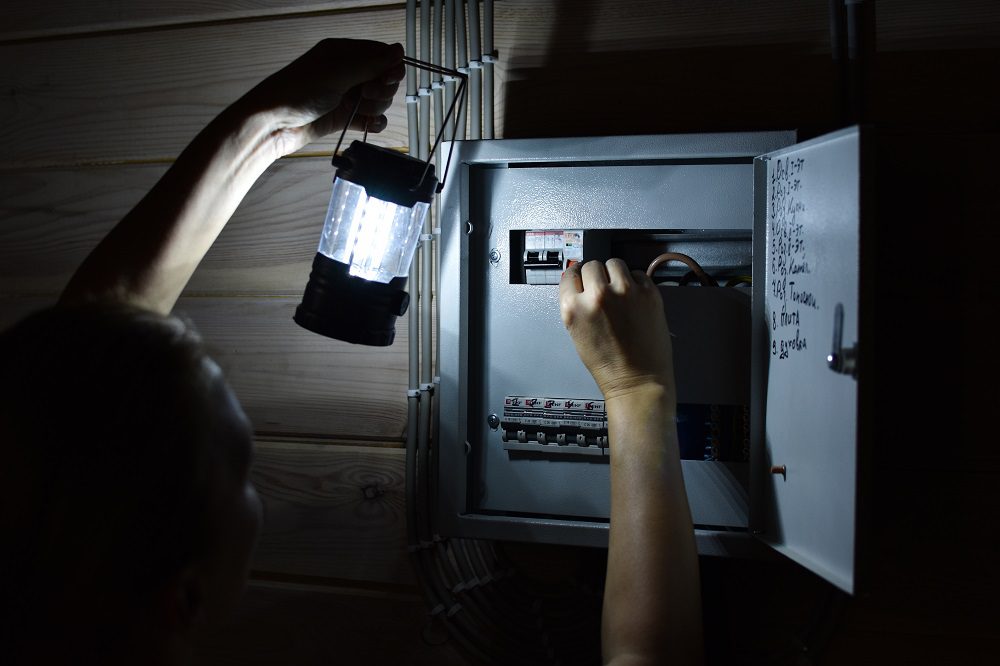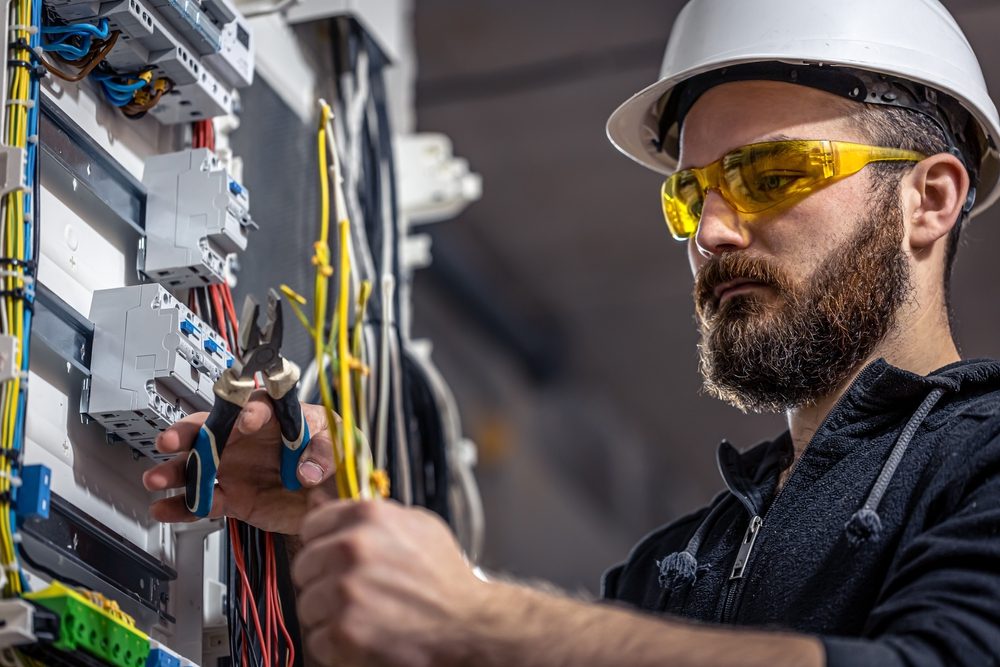Homeowners in Charlotte ask one question more than any other: what is electrical repair? In simple terms, electrical repair is the inspection, diagnosis, and correction of problems in a home’s electrical system. It covers small fixes like replacing a faulty outlet, mid-level work like rewiring a circuit, and critical repairs after a breaker failure or heat-damaged connections. Good repair work restores safety, brings equipment back within code, and prevents repeat outages.

Ewing Electric Co. serves Charlotte, Matthews, Mint Hill, Ballantyne, Plaza Midwood, Dilworth, South End, Steele Creek, and nearby neighborhoods. The team sees the same patterns across new builds, older bungalows, and renovated townhomes. The details below explain how professionals approach electrical repair, the three most common problem types, real examples from local homes, and what typical costs look like in Mecklenburg County.
What counts as electrical repair versus new installation
Repairs bring existing equipment back to safe, reliable operation. Replacing a worn receptacle, tightening a loose neutral in a panel, or correcting a double-lugged breaker are repairs. Installation adds new capacity or devices, such as a new EV charger circuit, under-cabinet lighting, or a subpanel for a finished basement. Many service calls blend both. For example, a failed bathroom GFCI might start as a repair and end with upgrading the entire bathroom circuit to current code.
Clear boundaries matter for code and pricing. Repairs often fall under maintenance and may not require a permit if like-for-like, but panel work, new circuits, and service upgrades do. In Charlotte, most panel replacements and any service mast or meter-base work require permits and inspection by CLT Development Services.
The three common problem types seen in Charlotte homes
Electrical issues usually cluster into three categories: connection problems, overload problems, and protection problems. Each leaves clues.
Connection problems involve loose, corroded, or damaged terminations. Symptoms include flickering lights when an HVAC compressor starts, warm outlets, intermittent power on a run of receptacles, or arcing sounds at a switch. Aluminum branch-circuit wiring from the late 1960s and 1970s amplifies this risk. So do backstabbed receptacles in 1990s builds. Correct repairs include moving backstabbed conductors to screw terminals, applying approved AL/CU methods for aluminum, replacing heat-damaged devices, and re-terminating neutrals and grounds to proper torque in the panel.
Overload problems occur when a circuit supplies more demand than it was designed to carry. Space heaters in a bonus room, window AC units, or too many what is electrical repair kitchen appliances on one small-appliance circuit can trip breakers. In older bungalows in Plaza Midwood, a single 15-amp circuit might feed multiple rooms and simply cannot keep up. Repairs may start with moving loads and labeling, but often the right fix is adding dedicated circuits or upsizing a circuit only when the wiring and breaker rating allow it.
Protection problems come from missing or failed safety devices. GFCI protection in bathrooms, kitchens, garages, and outdoor areas is required and prevents shock hazards. AFCI protection reduces fire risk from arcing faults in many living areas. Failed breakers, unprotected exterior receptacles, and outdated two-prong outlets fall into this category. A repair replaces the device and confirms proper grounding and bonding, not just swapping parts.
Real examples from Charlotte service calls
A South End condo with flickering LED cans during elevator runs in the building pointed to loose neutrals in the unit’s panel. The electrician found a double-stacked neutral under one screw and heat discoloration on the bar. Correcting the terminations and torquing to spec stabilized the lights.
A ranch home in Matthews had a tripping breaker every time the microwave and toaster ran together. The kitchen only had one 20-amp small-appliance circuit. The team added a second dedicated 20-amp circuit with GFCI protection and split the countertop loads. No more nuisance trips, and the work brought the kitchen closer to current code practice.
A 1940s Dilworth cottage had two-prong outlets and bootleg grounds. Testing showed false grounds created by bonding neutral to ground at the receptacles, which is unsafe. The proper repair replaced the receptacles with GFCI-protected, three-prong outlets marked “No Equipment Ground” or installed new grounded wiring where accessible. The choice depended on wall access and the homeowner’s renovation plans.
What an electrician checks during an electrical repair visit
A good repair starts with a short interview about symptoms and timing. After that, the technician inspects the service panel, checks breakers for heat and proper labeling, tests outlets for correct polarity and grounding, and evaluates suspect devices. Thermal imaging often spots hot connections. A clamp meter confirms load levels during appliance startup. The electrician compares findings to code and to expected performance, then explains options clearly before work begins.
Typical costs in the Charlotte area
Prices depend on access, parts, and time. Still, homeowners benefit from ballpark ranges:
- Device-level fixes: Replacing a standard switch or receptacle, including parts and trip, often falls between $125 and $225 per device. GFCI devices run higher, usually $165 to $275 each depending on location and weatherproofing. Circuit-level repairs: Finding and correcting a tripping issue on one branch circuit, including diagnosis, can range from $200 to $450 if no new wiring is required. Adding a new 20-amp circuit to a nearby area typically ranges from $350 to $850 when paths are open; finished walls raise costs. Panel work: Re-terminating neutrals and grounds, replacing a handful of breakers, and labeling typically ranges from $250 to $600. Full panel replacement with permit and inspection commonly ranges from $1,600 to $3,200 in Charlotte, depending on amperage, brand, grounding upgrades, and meter-base conditions. Grounding and bonding corrections: Adding ground rods, bonding the water line, and correcting service grounding often ranges from $350 to $900. Emergency calls: After-hours service usually adds an emergency fee. Expect a premium of $150 to $300 on top of repair work.
These ranges reflect straightforward situations. Hidden junction boxes, aluminum branch wiring, attic work in summer, or masonry walls can add labor.
Safety, code, and when to stop DIY
Simple tasks, such as replacing a faceplate or testing outlets with a plug-in tester, are reasonable for many homeowners. Anything inside a panel, any aluminum wiring, or signs of heat or arcing call for a licensed electrician. Common red flags include a burning odor, sizzling sounds, breakers that feel loose on the bus, and receptacles that wobble or feel hot. In Charlotte, code updates affect GFCI and AFCI requirements, smoke alarm interconnections, and tamper-resistant receptacles. Repairs that alter protection devices should meet the current standard, not the original build year.
What is electrical repair in new builds and remodels
Even new homes need repair at times. Loose terminations from rushed punch lists, incorrect breaker types for AFCI circuits, or miswired three-ways appear in recent builds around Ballantyne and Steele Creek. During remodels, repair overlaps with upgrades. Opening walls is the best time to correct buried splices, add grounding, and separate kitchen and laundry loads. Waiting until after drywall raises cost and reduces options.
How long repairs take
Most single-device repairs take 30 to 60 minutes. Circuit troubleshooting usually needs 60 to 120 minutes, longer if access is tight or multiple junctions exist. Panel corrections often run 1 to 3 hours. Full panel swaps are usually a same-day job, with power down for 4 to 8 hours and inspection scheduled soon after. Ewing Electric Co. coordinates with Duke Energy or the local utility as needed for meter pulls.
Preventing repeat issues
Flicker and tripping that return after a week usually point to a missed root cause. Experience shows the cure is a systematic approach: test under load, inspect terminations, and confirm protection devices match the wiring and loads. Labeling circuits helps future troubleshooting. So does a short maintenance routine: check GFCI and AFCI test buttons monthly, feel outlets that run big loads for warmth, and keep panel fronts clear for quick access.
Local factors that affect Charlotte homes
Humidity and summer heat stress connections in attic junction boxes. Pollen and dust find their way into exterior in-use covers, causing GFCIs to nuisance trip after storms. Many neighborhoods still have mixed aluminum and copper wiring from earlier renovations. EV chargers and heat pumps add new continuous loads, which push older 100-amp services to their limits. An electrician who knows local housing stock can predict where weak points hide, like backstabbed receptacles on lighting circuits in late-90s builds or shared neutrals on multi-wire branch circuits in older duplexes.
When repair becomes upgrade
A repair keeps the lights on. An upgrade improves capacity and safety. Indicators that it is time to go beyond repair include frequent breaker trips with normal use, a crowded or obsolete panel model, ungrounded circuits serving electronics, and plans for an EV, workshop, or home office. In many South End condos and Uptown townhomes, a 125-amp service works until a Level 2 charger arrives. Planning ahead saves a second visit and protects new equipment.
How to choose a Charlotte electrician for repair
Experience with diagnosis matters more than speed promises. Ask about testing methods, warranty on labor, parts sources, and whether the company handles permits when required. Brands matter less than proper installation, but compatibility is key in panels. A clear written scope, tidy workmanship, and clean labeling are good signs. Ewing Electric Co. documents findings with photos, explains options plainly, and prices work before starting.
Simple homeowner checklist before calling
- Note what was running when the issue started and whether it repeats. Check if one room or multiple rooms lost power. Test GFCI and AFCI devices and try a reset once. Look and listen for scorching, arcing, or a burning odor. If anything smells hot or you see smoke, cut power at the main and call immediately.
Ready for help in Charlotte, NC
If a breaker keeps tripping, lights dim during AC starts, or an outlet feels warm, that is the moment to act. Ewing Electric Co. serves Charlotte and nearby neighborhoods with same-day electrical repair, code-compliant fixes, and clear pricing. Call to schedule a diagnostic visit, or book online for a convenient time. A short service call today can prevent a bigger problem tomorrow and keep your home safe and reliable.


Ewing Electric Co provides dependable residential and commercial electrical services in Charlotte, NC. Family-owned for over 35 years, we handle electrical panel upgrades, EV charger installation, generator installation, whole-home rewiring, and 24/7 emergency repairs. Our licensed electricians deliver code-compliant, energy-efficient solutions with honest pricing and careful workmanship. From quick home fixes to full commercial installations, we’re known for reliable service done right the first time. Proudly serving Charlotte, Matthews, Mint Hill, and nearby communities.
Ewing Electric Co
7316 Wallace Rd STE D
Charlotte,
NC
28212,
USA
Phone: (704) 804-3320
Website: https://ewingelectricco.com/ | Google Site
Social: Facebook | Instagram | Twitter
Map: View on Google Maps